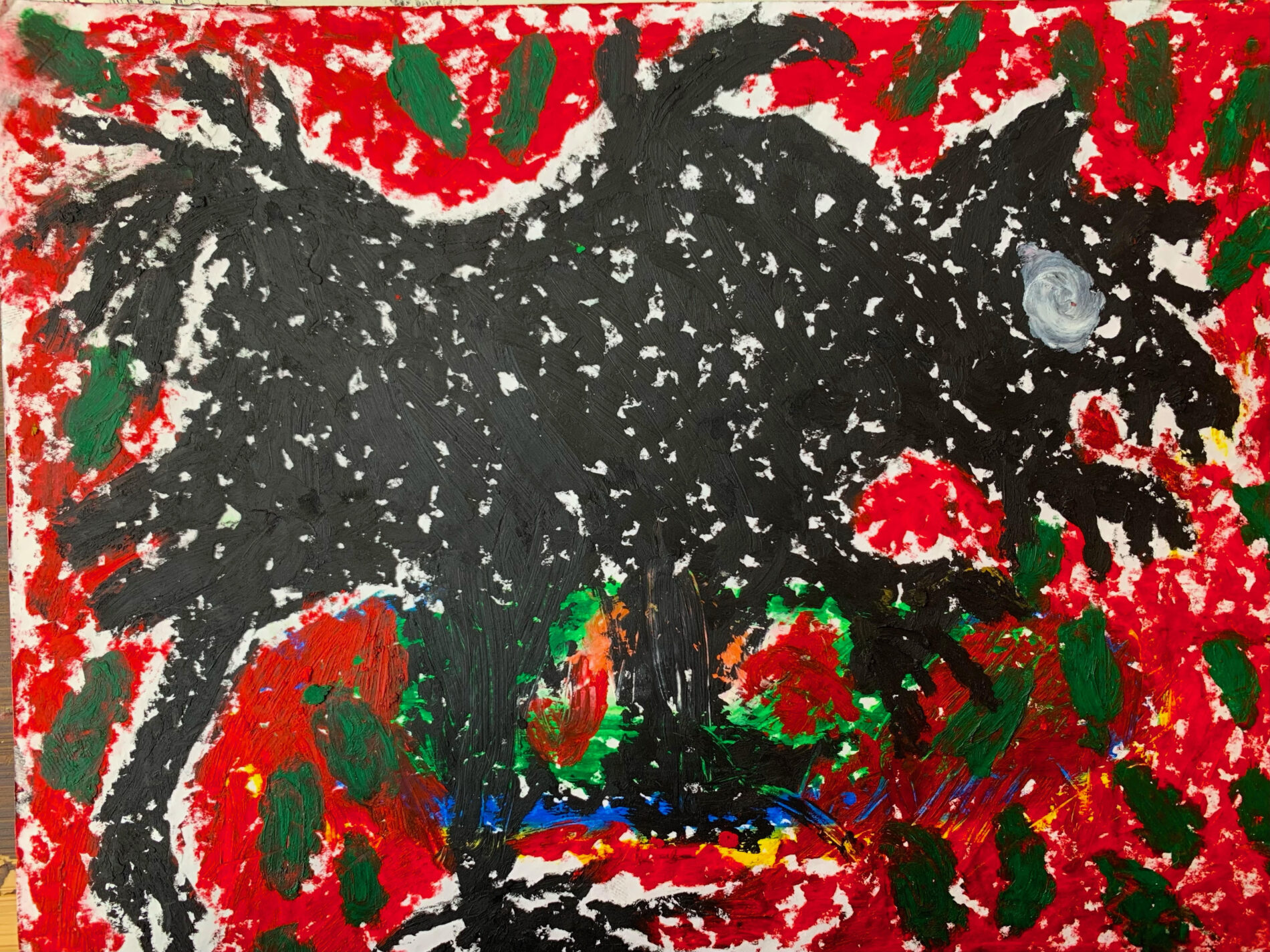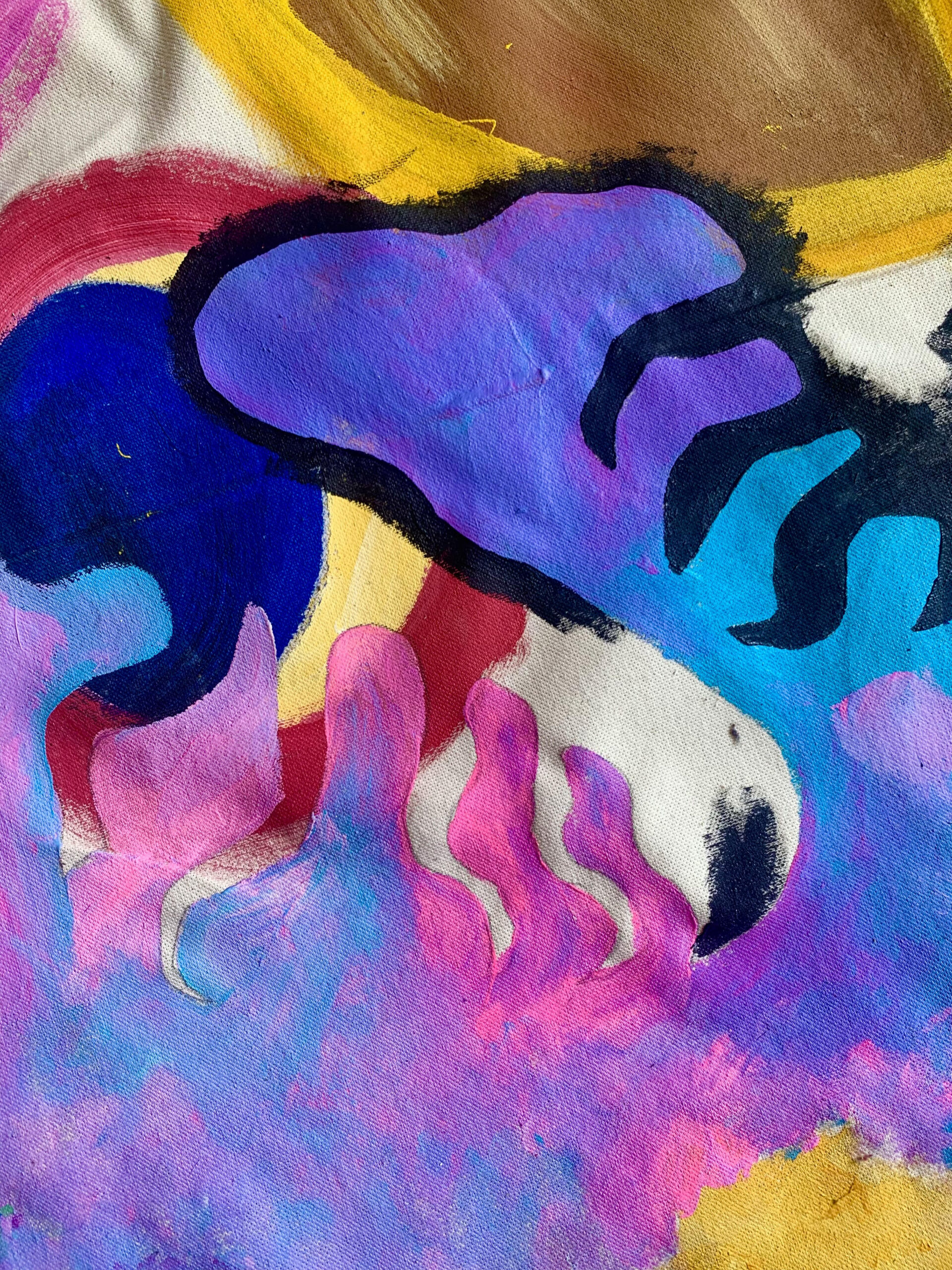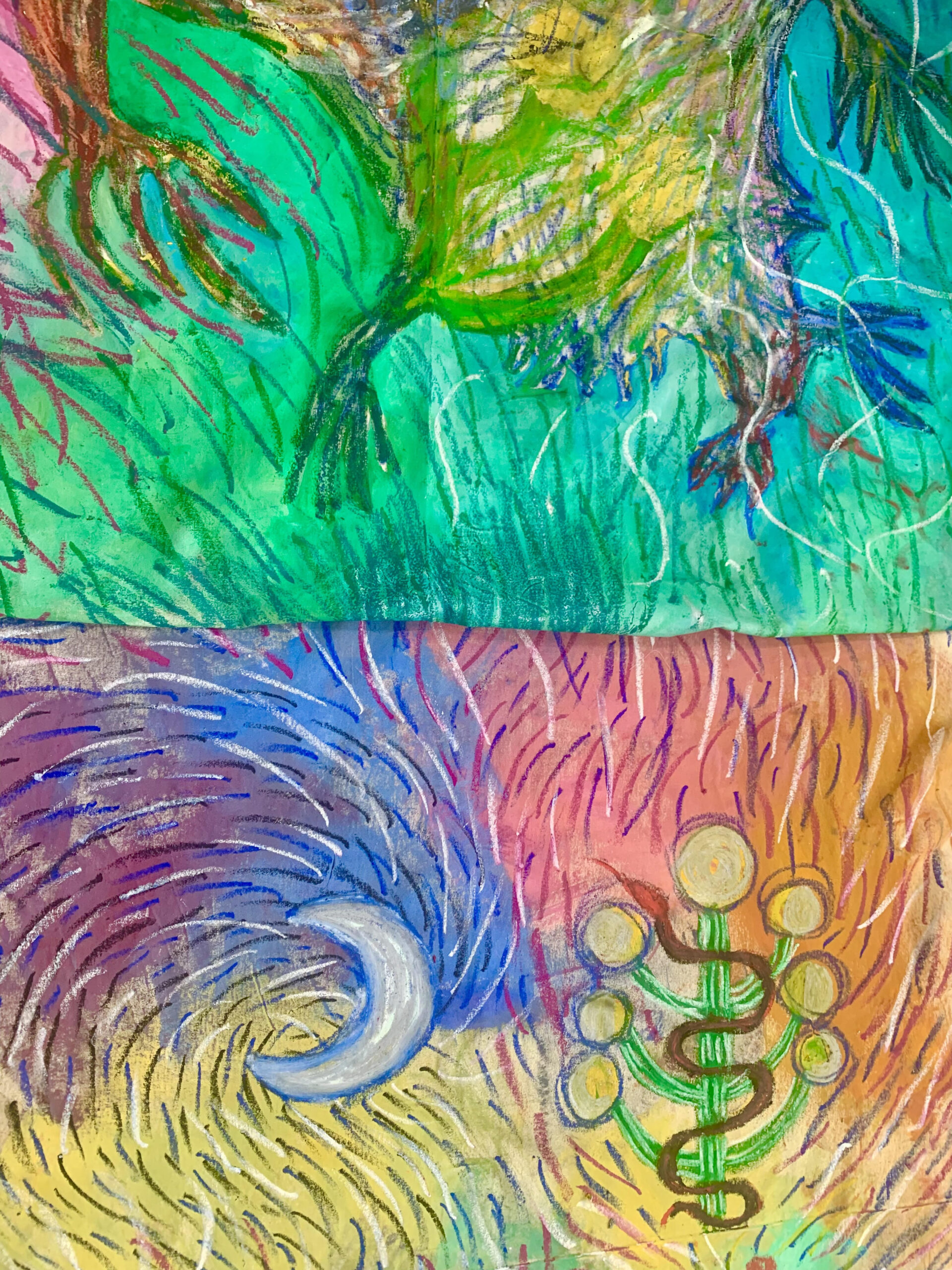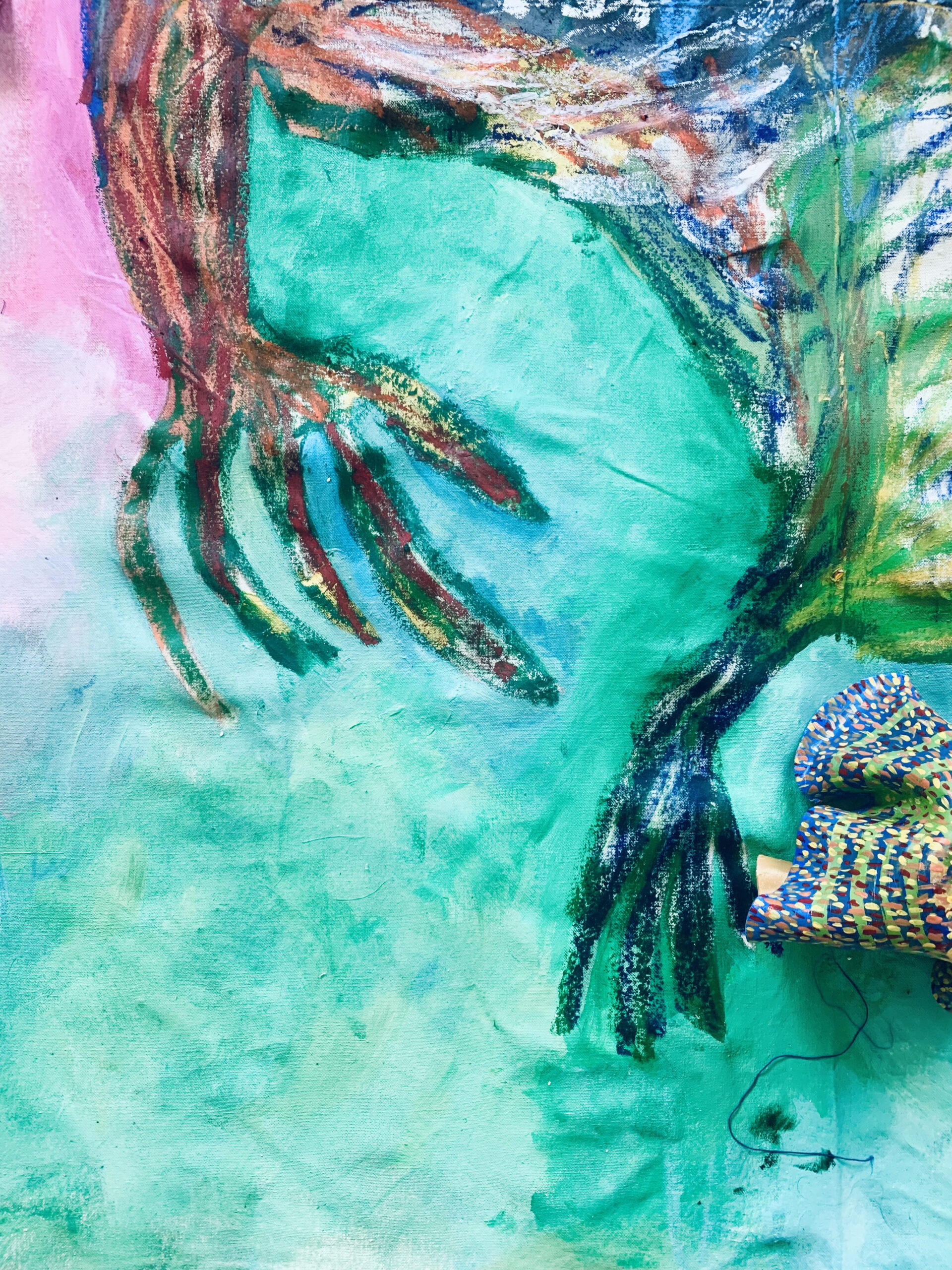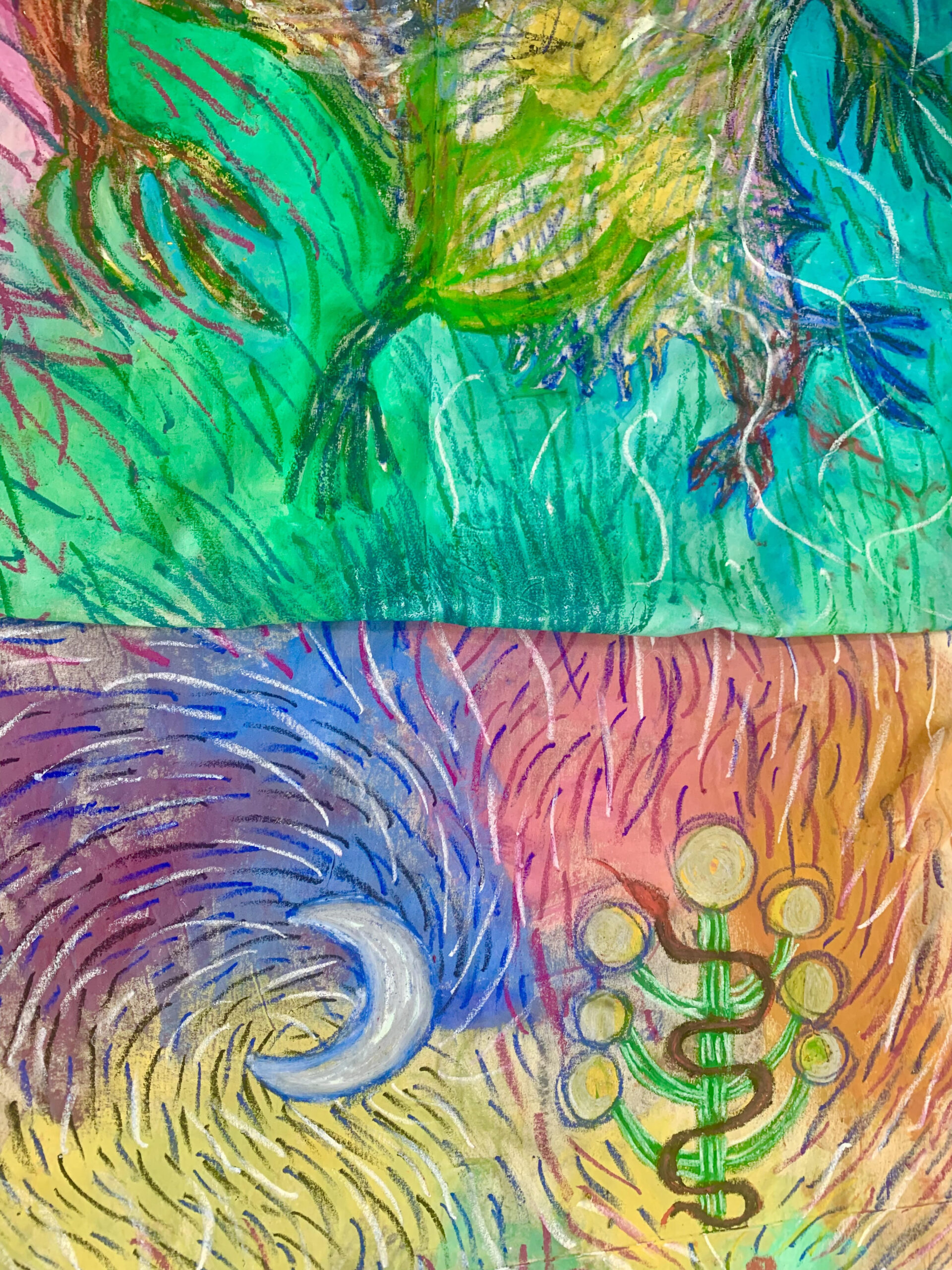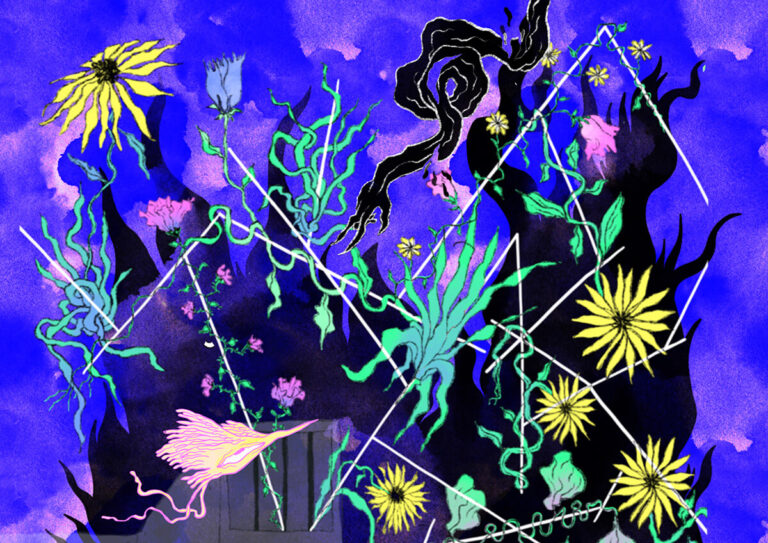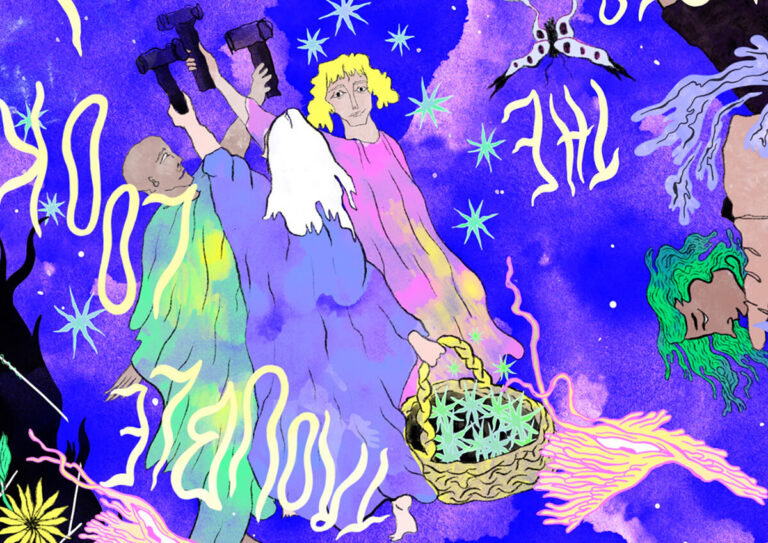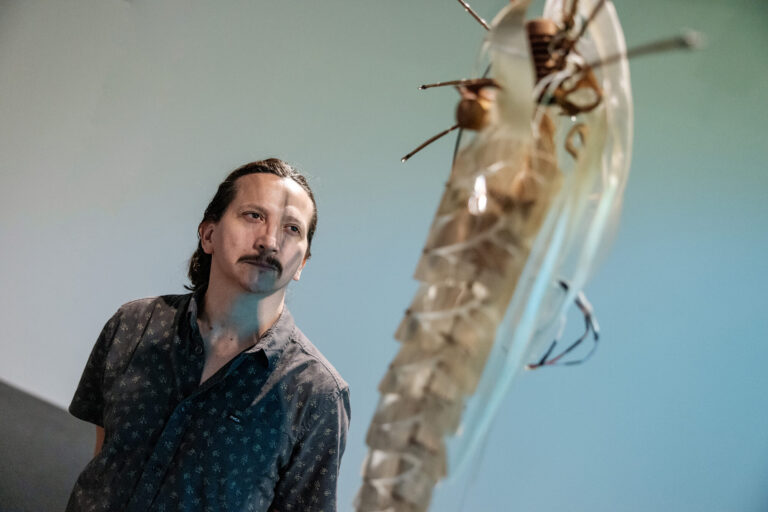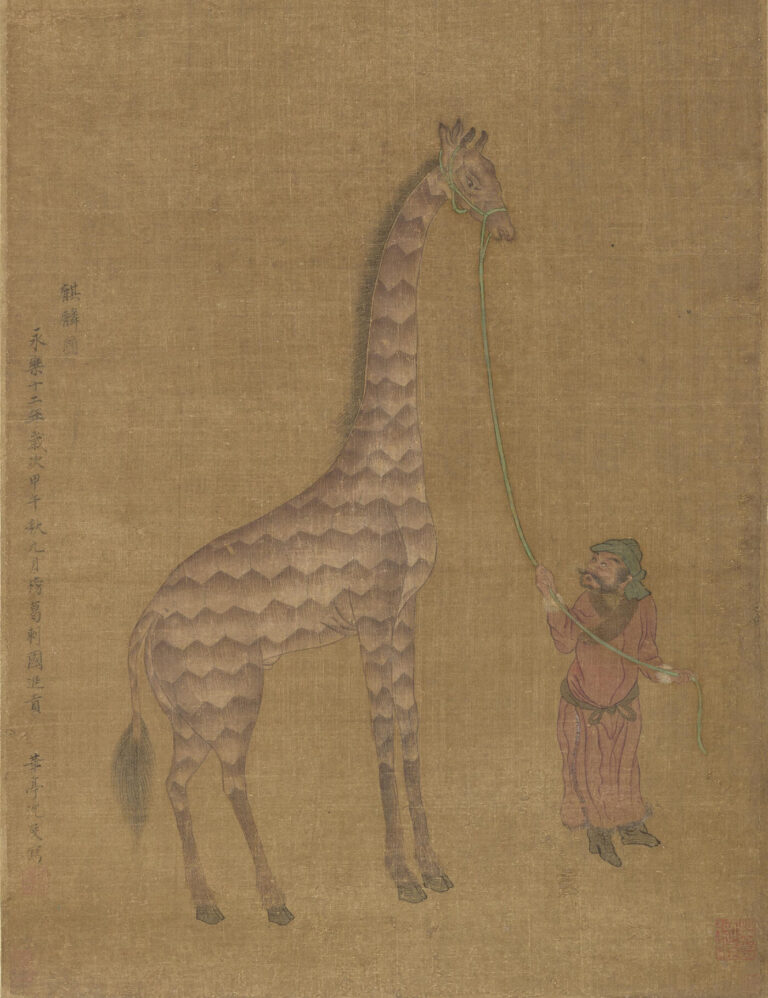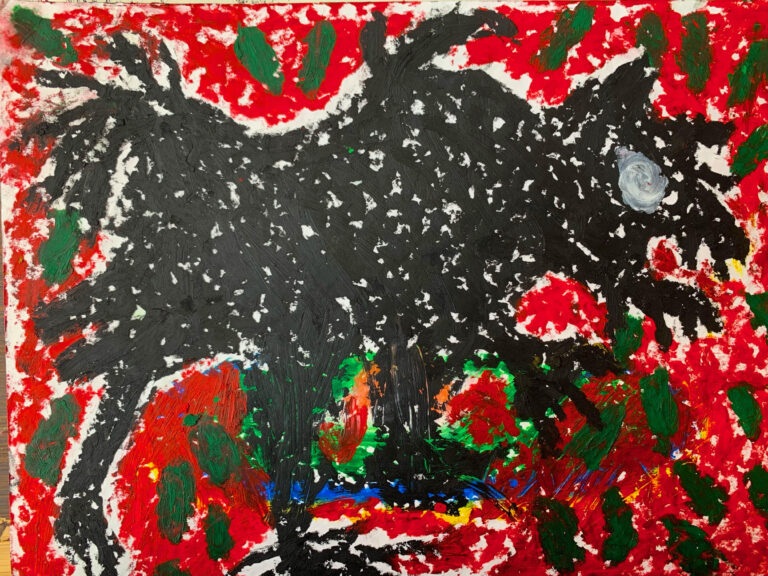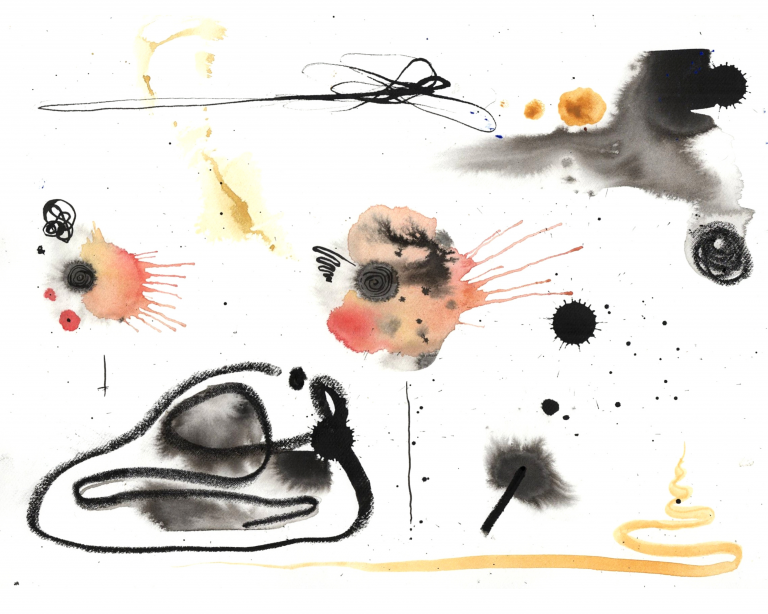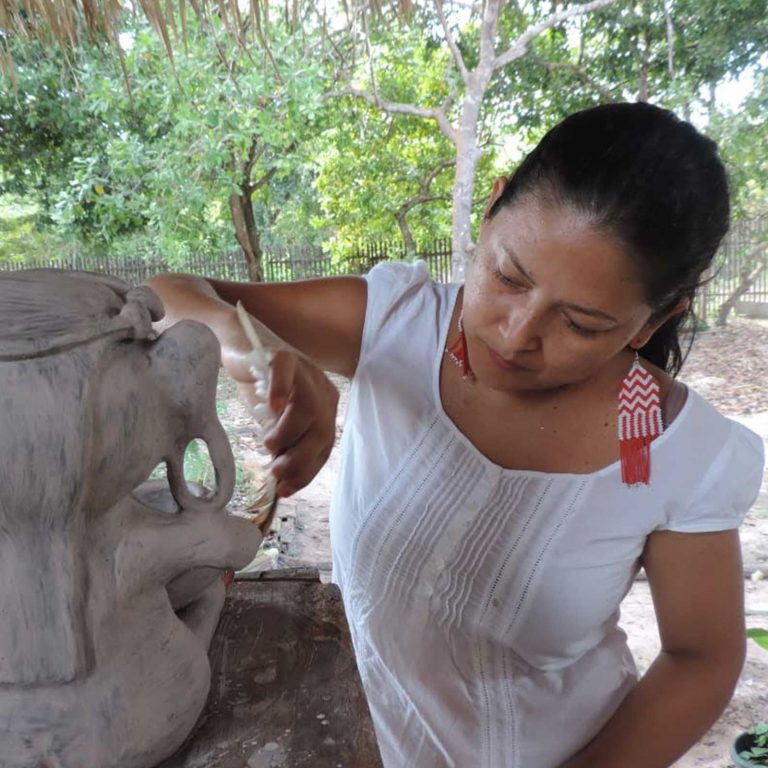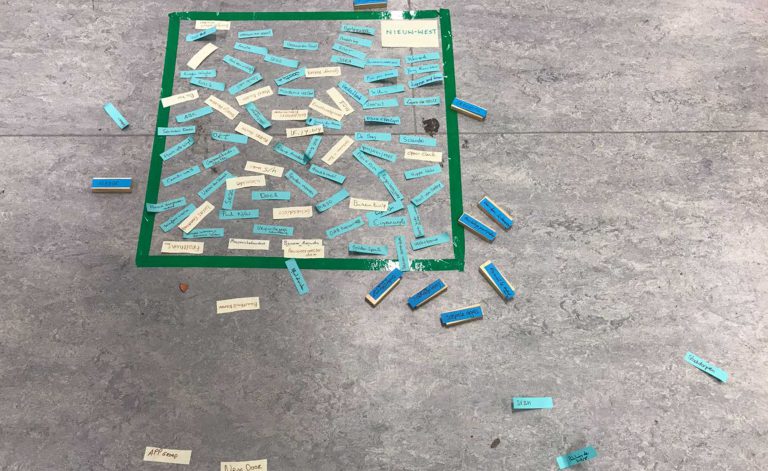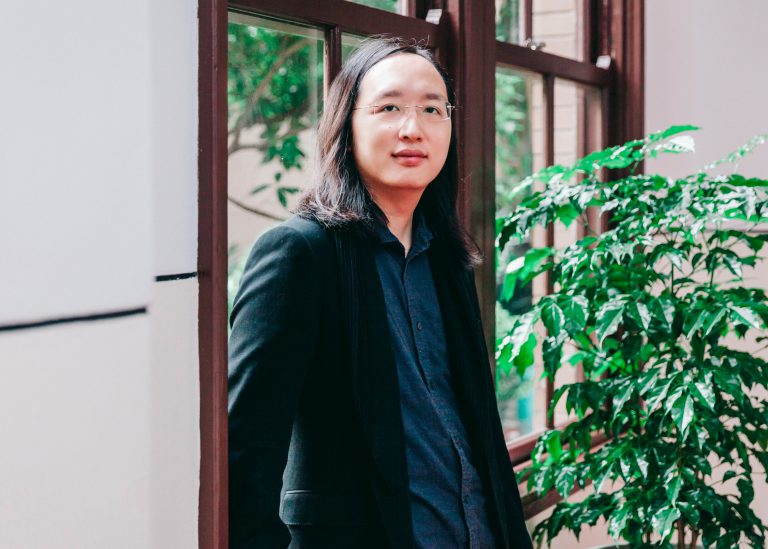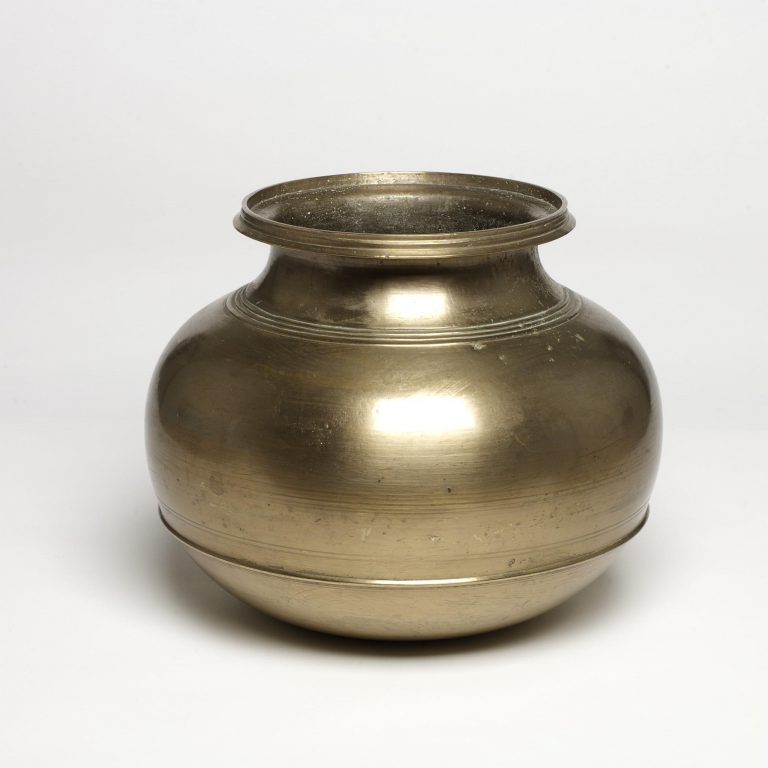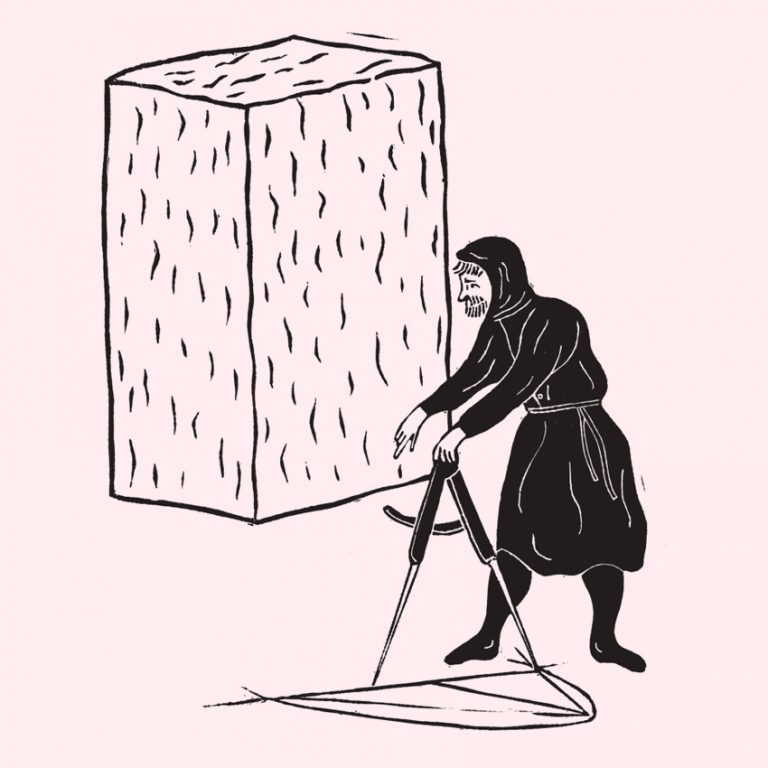Editor’s note: this is a partial transcript of the opening speech given by the Transnational Autonomous Society for Atlantic Imperialism Studies, an organisation dedicated to the research of early imperial formations across the former territories of Europe and the Americas. The opening discussion took place as part of the 2188 cycle of Caracoles de Resistencia, an event format initiated by the Zapatista movements of the late 20th and early 21st centuries. Unfortunately, only a fragment of this recording has been preserved, as most documentation of this event has been lost to the floods that affected the Western Andean Territories the following year.
Healer and mediator Atipaq Paillama:
Welcome all to the opening session of our Caracol de Resistencia. In the spirit of the Caracoles of the 21st century, I want to invite all participants to join us in this spiral of knowledge and exchange. I encourage those of you who can to lay their hands on the Earth, and make yourselves comfortable. Breathe in, and welcome the energy of silphium, our relative, within you today. Breathe out, and let’s take a moment of reflection and gratitude for her gifts, and those of our other plant relatives.
[silence]
Thank you all for making space for this brief moment. Today I am very happy to welcome Elder and Professor Shewit Cee, from the Tigrayan Centre for Reproductive Health, and Head Farmer and Seed Conservator Tafsut el Djermouni, from the Sahrawi Coalition for Agricultural Knowledges. My name is Atipaq Paillama, and I am a Food and Land Healer at the Community Health Council in Nazca, Western Andean Territory.
In this discussion, we will discuss the history of the Cult of Sylphis – an ancient religious sect centred around the worship of our plant relative, silphium. As you know, silphium is a sacred plant, generous enough to give us many blessings; today at lunch we were all lucky enough to be able to enjoy the delicious chöchüre silphium dumplings with Ancient Roman garum broth prepared by Master Cook Muyesser Ablesh. I would like to start our session with an invitation to Professor Cee to introduce our topic of discussion, with an overview of the history of our relative and some of the sacred rites associated with it.
Professor Shewit Cee:
Thank you Atipaq for this beautiful introduction. Some of you might already be familiar with silphium, and as Atipaq mentioned we were all lucky enough to enjoy it at lunch, as an ingredient in Master Cook and chef researcher Ablesh’s outstanding food. For those who aren’t fully familiar with silphium’s story, allow me to make a short introduction.
Silphium was a plant in the fennel family that once grew in the dry Mediterranean landscapes surrounding the ancient city of Cyrene, on the Eastern coast of the Libyan lands. In Ancient Greece and Rome, silphium was valued for its medicinal and aromatic properties; historical accounts extensively document the use of its sap as a spice in Greco-Roman cuisine, as well as the use of its juice in aphrodisiac, contraceptive, abortifacient, and other medicinal preparations. Theophrastus describes it as a plant with thick roots, and leaves resembling celery. Roman gourmet Marcus Gavius Apicius writes about the use of silphium in multiple Greek-Roman preparations – for instance, in dishes such as Parthian chicken, as well as in sauces for truffles and gourds. Playwright Aristophanes depicts silphium as a prized delicacy consumed by the most fashionable elites of Athens. Physician Pedanius Dioscorides writes about its medicinal uses in infusions capable of inducing menstrual flow.
Now I would like to ask Conservator Tafsut to continue this overview, because I’m sure they’ll have a lot to add.
Conservator Tafsut El Djermouni:
Thank you, dear Shewit, for your graceful introduction. I would like to raise a few points related to the economic importance of this plant. It’s important to understand that silphium was coveted throughout the ancient world and came to occupy an essential place in the export economy of ancient Cyrene. Its image was minted in the city’s tetradrachm coins; at one point, the Roman Empire kept 1,500 pounds of silphium in its treasury along with reserves of gold and silver.
Unfortunately, by the end of the first century AD, silphium was already extinct due to overharvesting, and its disappearance is currently considered to be the first documented instance of the anthropogenic extinction of a species. I believe that angle, however, is a bit misleading. This was not merely a case where the extinction of a species was caused by humans; this was an extinction event triggered and facilitated by early experiments in settler colonialism, in a process and logic that would later be deployed in the lands named the “Americas” by European invaders.
Additionally, at the time that silphium disappeared, Cyrenaica was undergoing a climate shift known as the Roman Warm Period – a time that brought unusually warm weather to an already dry region. Aridity and soil depletion might have been further aggravated by the mismanagement of the land by Roman landowners, who – unlike local farmers – were interested in short-term profit over maintaining sustainable agricultural practices.
Healer Paillama:
Thank you both for these illuminating overviews of the origins of this plant. I would now like to steer the conversation to the origins of the Cult of Sylphis. Could you both tell us a bit more about that?
Professor Cee:
Sure! If you don’t mind, Tafsut, I can start.
[El Djermouni nods and smiles]
Well, first of all I think it’s relevant to mention that, in the 2020s, a group of researchers at İstanbul University found a plant species growing around the slopes of Mount Hasan, in Central Anatolia, that closely resembled the legendary silphium. The plot thickens!
[audience laughs]
At first, it was difficult to prove whether this was indeed the ancient plant or not, as there was no DNA evidence to corroborate the findings of the İstanbul group. However, in 2057, an archeological expedition to the Haua Fteah cave in northeastern Lydia discovered an entrance to a small, previously unknown grotto that had been closed by a landslide, likely caused by changing climate patterns. The entrance was estimated to have been closed off for at least 500 years. Inside, researchers found an altar-like construction and traces of numerous paintings on its limestone walls depicting what looked like scenes of a story: black raindrops descending from the moon over a landscape featuring plants, animals and humans; a plant with a thick stalk and protruding branches, surrounded by a curling serpent; a dragon-like creature with multiple limbs eating that same plant.
Conservator El Djermouni:
Researchers also found a total of 32 fired clay vessels containing what seemed to be offerings. Some of the vessels dated from the first millennium BCE; others appeared to date from as late as the 16th century. Alongside, they also found a series of stone tablets written in Libyco-Berber alphabet – an extraordinary find, given that it was previously thought that use of this alphabet had been eradicated in the region following the Roman invasions. These tablets appeared to belong to an incomplete book of worship, recounting the story of a goddess named Sylphis, whose name also appeared on the vessels, written in Lybico-Berber script. The goddess Sylphis, according to what researchers could piece together from these fragments, held power over processes of change and transformation related to nourishment, fertility, lust and transitions between life and death. The vessels contained a number of foods thought to have been prepared as offerings: the remains of black-eyed peas, wheat, dates and pomegranates, all plants associated with fertility and contraception. Next to the altar paintings, researchers found two smaller vessels. One contained the remains of an unidentified plant; the other, found next to the painting with black raindrops, contained seeds. DNA sequencing allowed them to identify this biological material as Ferula drudeana – the plant proposed as silphium by the researchers at İstanbul University. This was a key discovery in the effort to piece together the history of this cult; first, because the plant material was dated to the 11th century — a thousand years after the supposed extinction of silphium. Additionally, the location of this discovery — in a secluded cave — suggested an element of secrecy. One theory proposes that, given the commercial significance of silphium, members of the Cult of Sylphis kept their faith secret precisely to avoid further harm to the species. According to this theory, devotees continued to grow the plant in secluded spaces — such as the walled orchards where it was found by the Turkish researchers.
Healer Paillama:
And if I may interject, here we reach a very interesting point related to the travel and distribution of this plant, which I think Tafsut can clarify for us.
Conservator El Djermouni:
Yes, for sure! The Haua Fteah grotto discovery was extraordinary for several reasons. It allowed for a better understanding of how this plant traveled through migratory routes – suggesting that seeds might have been brought to Anatolia from Cyrene as part of a religious cult, as well as a result of the trade routes established during the Byzantine occupation of Lydia. This secrecy theory goes against the original conjectures of the İstanbul group, who proposed that the plant might have remained unrecognised as silphium in Turkey for 2,000 years. According to the secrecy theory, the plant was brought there precisely because it was worshipped as part of the cult of Sylphis, instead of accidentally ending up there. If true, this would be an early example of a ritualised practice of biodiversity conservation. It’s quite extraordinary to think that members of the cult of Sylphis took up the task of ensuring the preservation of this species, often in direct defiance of colonial interests, and that they were able to do so for so long.
Prof. Cee:
Yes, and this theory seems to be corroborated by another find that followed the 2057 grotto discovery. In 2102, the Great Andean Earthquake revealed another previously-unknown small grotto in the ancient ceremonial city of Cahuachi, in the Western Nazca Territories. Within it, fragments of 13 fired clay vessels – produced between the 13th and 19th centuries – were found. Traces inside the vessels indicate they were made to hold offerings, similar to those found in Haua Fteah, in this case, maize and mayocoba beans. Like in Haua Fteah, a smaller vessel, found closer to one of the painted walls of the grotto and miraculously intact, contained seeds of Ferula drudeana – a plant that was not native to Abya Yala, and could only have been brought there through human interference. The paintings on the Cahuachi cave, although different in style, presented remarkably similar themes to the ones in Haua Fteah: black rains descending from the moon, serpents, cycles of transformation.
Healer Paillama:
This was truly an extraordinary find. It allows us to piece together so much more of the story of the plant, and the history of the cult of Sylphis, but it also opens up so many more questions. Was there some form of syncretisation of this ancient cult with local belief systems? How did the knowledge of this plant’s medicinal qualities, particularly those related to reproduction, which appeared integral to this cult, carry through new landscapes? And how did this belief system, which seems to have survived an early form of colonial occupation, relate to this new context of colonial occupation in another land?
Editor’s note: the partial transcript ends here.
